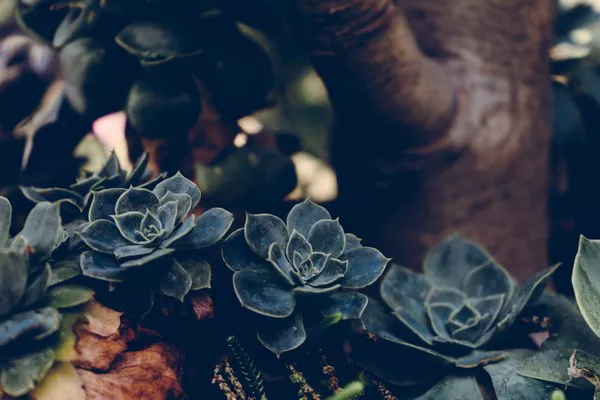Succulents have gained immense popularity in recent years, thanks to their captivating diversity, easy-care nature, and ability to thrive in various environments. Whether you’ve recently acquired a new succulent or you’re simply curious about the identity of the succulents you already own, identifying these unique plants can be both rewarding and informative.
Visual Characteristics of Succulents
Succulents come in a wide array of shapes, sizes, and colors. Understanding the visual characteristics of succulents is a fundamental step in identifying the species you have. These characteristics include:
Leaf Shape and Size: Succulent leaves can be fleshy, elongated, or rounded. They may be flat, thick, or cylindrical. Observing the shape and size of the leaves is a crucial first step.
Leaf Color and Texture: Succulent leaves can range from vibrant greens to silvery blues, deep purples, and even reds. The texture may be smooth, waxy, or covered in fine hairs or spines.
Growth Habit: Succulents can be rosette-forming, trailing, upright, or branching. Some grow as compact clusters, while others sprawl or hang gracefully from containers.
Bloom Appearance: Pay attention to the shape, color, and size of the flowers if your succulent is in bloom. Blooms can be star-shaped, bell-shaped, or tubular, and they come in a spectrum of colors.
Online Succulent Identification Tools
In the digital age, several online resources and apps have been developed to help succulent enthusiasts identify their plants. These tools often use image recognition technology and databases of succulent species to provide accurate identifications. Some popular options include:
PlantSnap: This app allows users to take photos of their succulents and receive instant plant identification. It boasts a large database that covers a wide range of plant species, including succulents.
iNaturalist: iNaturalist is a community-driven platform where you can upload photos of your succulents, and experts and fellow enthusiasts can help identify them.
Succulent Plant Identification Groups: Social media platforms like Facebook host groups dedicated to succulent identification. Joining these groups and sharing photos of your succulents can lead to valuable insights from experienced growers.
Succulent Care Guides
Sometimes, identifying your succulent species can be aided by understanding its care requirements. Different succulents have unique needs when it comes to sunlight, water, and soil. By matching your succulent’s care preferences with its visual characteristics, you can narrow down potential species. For example:
Echeveria: Echeverias are known for their rosette-shaped clusters of fleshy leaves. They prefer bright, indirect sunlight and well-draining soil. Common varieties include Echeveria ‘Lola’ with its pale blue-gray leaves and Echeveria ‘Black Prince’ with dark, almost black foliage.
Haworthia: Haworthias are characterized by their small, pointed leaves arranged in rosettes or columns. They thrive in indirect sunlight and well-draining soil. Popular varieties include Haworthia cooperi and Haworthia attenuata.
Sedum: Sedums often have trailing or upright growth habits with succulent leaves. They enjoy full sun and well-draining soil. Varieties include Sedum morganianum, commonly known as the “Burro’s Tail,” and Sedum rubrotinctum, known as the “Jelly Bean Plant.”
Botanical Resources
Delving into botanical resources can provide valuable information for succulent identification. Botanical books, field guides, and online databases dedicated to succulents are rich sources of knowledge. Some useful resources include:
Books: Acquiring a well-illustrated succulent identification book, such as “Succulents Simplified” by Debra Lee Baldwin or “The Illustrated Encyclopedia of Succulents” by Maurizio Sajeva and Mariangela Costanzo, can be immensely helpful.
Online Databases: Websites like “The Plant List” and “World Flora Online” provide detailed information on succulent species, including their scientific names, distribution, and characteristics.
Botanical Gardens and Nurseries: Visiting local botanical gardens or succulent nurseries can offer hands-on experience with different succulent species. Knowledgeable staff can also assist with identification.
Consulting with Experts
Sometimes, identifying succulent species can be challenging, especially if you have a rare or unusual specimen. In such cases, consulting with experts in the field can provide valuable insights. Consider reaching out to:
Local Horticultural Societies: Many regions have horticultural societies or cactus and succulent clubs. Members of these organizations are often well-versed in succulent identification and cultivation.
Botanists and Researchers: Botanists and researchers specializing in succulents may be available for consultation, especially in academic institutions or botanical research centers.
Online Forums and Communities: Engage with online communities dedicated to succulents, such as the subreddit r/succulents or various succulent forums. Knowledgeable members are usually eager to assist with identification.
Conclusion
Identifying your succulent species can be a rewarding journey that deepens your appreciation for these remarkable plants. By closely examining visual characteristics, utilizing online identification tools, understanding care requirements, exploring botanical resources, and consulting with experts, you can unravel the mystery of your succulent’s identity. Remember that succulents come in a stunning variety of forms and colors, and each species has its own unique charm. Embrace the opportunity to learn more about your succulent and watch it thrive under your care.


